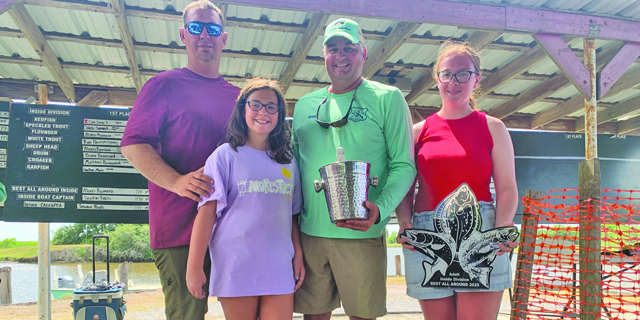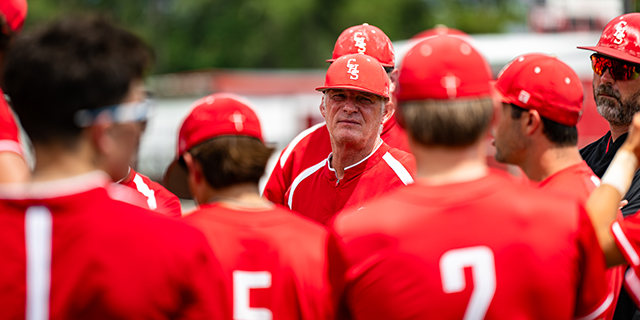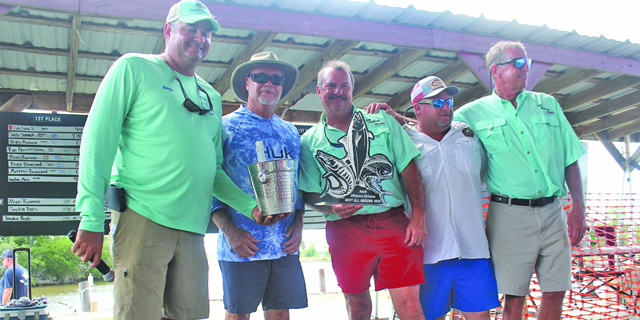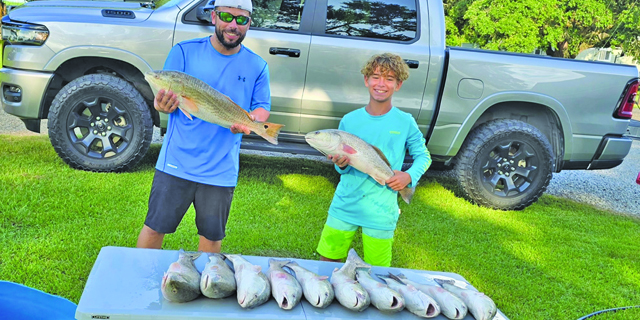Paying for Play
Published 7:00 am Tuesday, September 25, 2018
How To Keep Youth Involved In Athletics
By Wynce Nolley
Trending
A new phenomenon is quickly emerging in the expansive field of young athleticism called Youth Sports Burnout. It is defined as a spectrum of conditions, such as overreaching and overtraining, often occurring as a result of chronic physiological and psychological stress that causes a young person to cease participation in a sport that was previously considered enjoyable.
The condition is currently being studied by Jerry Reynolds, a Ph.D. student and adjunct professor at the Louisiana State University School of Social Work who resides in New Iberia.
“It’s almost like they shut down and they just don’t want to do it because they’ve done it so much,” says Reynolds. “It’s the culture of it. I mean it’s strictly a performance-based model. It’s not really based on just simply having fun.”
According to the Aspen Institute’s Project Play Report that relies on statistics from the Sports & Fitness Industry Association, which tracks sports participation rates among preteen children, 40 percent of kids played team sports on a regular basis in 2013, down from 44.5 percent in 2008. Also, only 52.2 percent took part in those activities even once during the year, down from 58.6 percent. And in 2013, less than one in three children ages 6 – 12 engaged in a high-calorie-burning sport or fitness activity three times a week.
According to Reynolds, dropout and burnout from youth sports are considered two very different outcomes. While dropout is classified when children quit a sport due to their own free choice, burnout results from overexertion and a general loss of interest from repetitive behavior in a single area of sports.
Reynolds recommends that children should not be playing single or specialized sports until about age 13, and that they should be playing a variety of sports until then.
Trending
“Really that kind of 8 – 12 year old range is really important, because that’s when parents will get real serious about it,” he says. “And, obviously, those types of programs are not nearing sort of a youth development model. They are mirroring a professional sports model.”
It is this time in a young athlete’s blooming sports regimen that the idea of making a single sport into a potential career goal takes hold, which is usually further encouraged by one or both parents.
“One of the things I’m focused on going forward is really how to help parents to address issues of Youth Sports Burnout, and really to kind of help empower parents to make informed decisions about youth sport participation,” says Reynolds.
Most of today’s athletic research is focused on the physical effects of youth sports including overexertion and injury, however there is little research that focuses on parent education and how that affects parent behavior.
Reynolds notes that his research also shows that the longer families are exposed to these specialized sports environments, or the younger a child starts a certain sport, the higher the risk for the whole family to experience a kind of collective burnout.
“When a family chooses to participate in sort of a professional-esque sports environment there’s a lot of choices, but also it’s not just an individual decision it’s a family decision,” says Reynolds. “And, the family has to think of what the consequences of doing that are.”
There are some obvious benefits of being heavily involved in a single sport including general physical, mental and social well being along with skills development and fostering virtues like teamwork, camaraderie and discipline.
But there are also a certain number of detriments for focusing so highly on a single sport.
“The risks show that the expectations for a lot of those athletes are feeling pressure to specialize and what that creates is really a high risk of injury,” says Reynolds. “Another thing is that there is sometimes a lack of enjoyment, competing priorities, pressure from parents, and really poor emotional regulation and an overemphasis on performance or overdevelopment.”
Today, these quasi-professional youth sports can potentially resemble more of a job for children than just something that they can enjoy and have fun doing in their free time.
Virtually every parent is going to be a sports parent at some point over the course of raising their child and that can be very difficult, says Reynolds. But, he says, there are two major factors impacting a parent with a child engaged in youth sports: the pressure to provide support for their young athlete and managing the forces of pressure.
“By pressure I mean not just the kind of expectations of family goals, but it’s also forces from outside, like to fit into a social group, or the parents now have built these relationships and they want to maintain those relationships, because it’s all kind of funneled through the sport,” he says. “And, in addition to that, there is the pressure to make teams, to perform at certain levels and all of those different things.”
But according to Reynolds and his research, the main reason that child athletes burnout and quit is simply because the sport is just not fun anymore.
“I think the professionalization of youth sports is really a big contributor to that,” says Reynolds. “Parents are making these decisions a lot of times for young people and creating these structures and we have to think about the types of organizations that we want to have where we maximize participation and not just wins and losses.”
Reynolds says that another contributing factor for this problem is that the era of the sandlot or unstructured play is coming to an end.
“One thing that is causing kids to really have risks associated with burnout is that there’s just not free and unstructured play that’s taking place where kids are making the rules,” he says.
However, there are some steps that parents can take to help prevent Youth Sports Burnout in their children.
“I think it’s important to understand their children, number one,” says Reynolds. “And, also, to understand how to be an informed parent, to really be involved in selecting an activity and really getting to know coaches and making sure that there is down time and diversity in the different sports that they participate in.”
Reynolds also suggests that parents know how to manage the relationship that sports has with the family at large and to set appropriate boundaries.
“They should know when and how to apply certain parenting styles at different times, model strong emotional behavior and know how to foster healthy relationships with other parents, with coaches and with their child as well,” he says.
It is also important for parents to adapt to the different stages of a child’s athletic development.
“At certain ages they are going to have to do things a little differently,” he says. “But also finding that balance is really important and really making a decision that’s for their family and not always relying so much on hearsay.”





